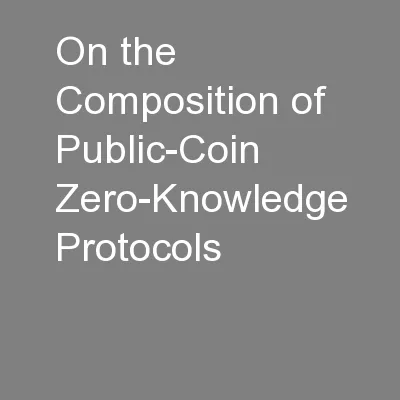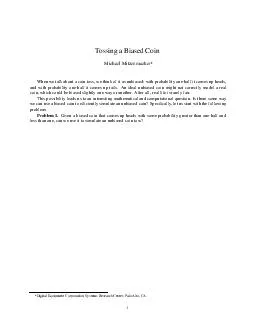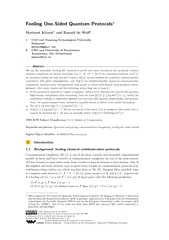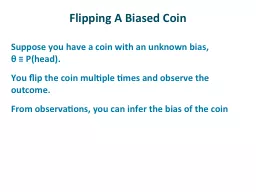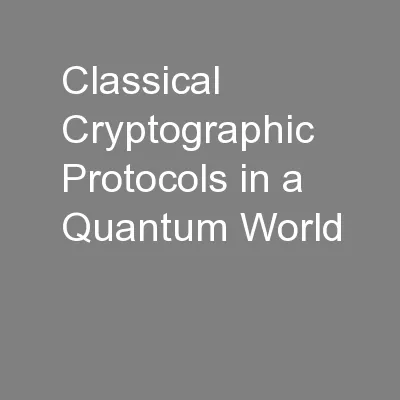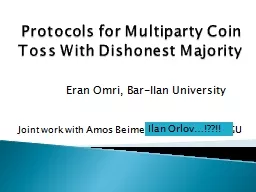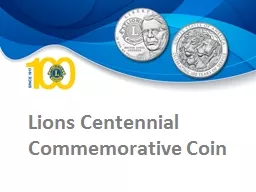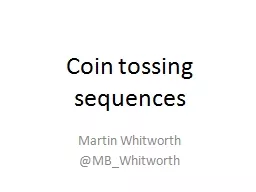PPT-On the Composition of Public-Coin Zero-Knowledge Protocols
Author : luanne-stotts | Published Date : 2016-07-04
Rafael Pass Cornell WeiLung Dustin Tseng Cornell Douglas Wiktröm KTH 1 Zero Knowledge GMR85 Interactive protocol between a Prover and a Verifier where the Verifier
Presentation Embed Code
Download Presentation
Download Presentation The PPT/PDF document "On the Composition of Public-Coin Zero-K..." is the property of its rightful owner. Permission is granted to download and print the materials on this website for personal, non-commercial use only, and to display it on your personal computer provided you do not modify the materials and that you retain all copyright notices contained in the materials. By downloading content from our website, you accept the terms of this agreement.
On the Composition of Public-Coin Zero-Knowledge Protocols: Transcript
Download Rules Of Document
"On the Composition of Public-Coin Zero-Knowledge Protocols"The content belongs to its owner. You may download and print it for personal use, without modification, and keep all copyright notices. By downloading, you agree to these terms.
Related Documents

